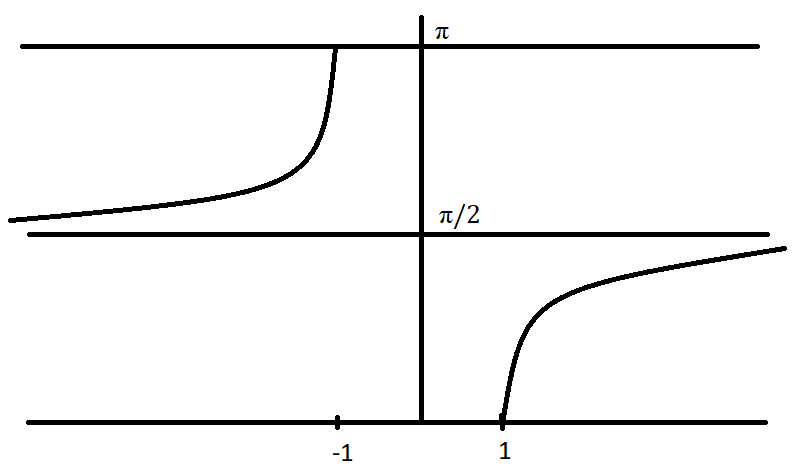Question
Question: The range of \[{\sec ^{^{ - 1}}}x\] is A.\[\left[ {0,\pi } \right]\] B.\[\left[ {0,\pi } \right]...
The range of sec−1x is
A.[0,π]
B.\left[ {0,\pi } \right] - \left\\{ {\dfrac{\pi }{2}} \right\\}
C.[2−π,2π]
D.(2−π,2π)
Solution
Here we will use the concept of trigonometric function. First, we will find the range and domain of secant function. Then with the help of this range and domain we can easily identify the range domain of the inverse secant function.
Complete step by step solution:
Let the given function sec−1x be y. Therefore we get
⇒y=sec−1x
From the above equation the value of x, we get
⇒x=secy
Here we can clearly see that the x is the function of secant function. Therefore, we get
x≥1 or x≤−1
This means that the domain includes all the value from −∞ to ∞ except for the numbers between −1 to 1.
We will draw the graph of the secant function.

Substituting the value x≥1 and x≤−1 in y=sec−1x, we get
y=sec−1(−1)=180∘
Or
y=sec−1(1)=0∘
Hence the domain of the function sec−1x is from 0∘ to 180∘ except at 90∘.
Therefore, we get range of sec−1x is \left[ {0,\pi } \right] - \left\\{ {\dfrac{\pi }{2}} \right\\}
So, option B is the correct option.
Note: Here we should note that the range and domain of the secant function will be the range of integer value. The range and the domain of the inverse secant function will be the range of all the angles of its occurrence. The range and domain of the trigonometric functions like the value of the sin function varies from −1 to 1. As the value of x is either greater than 1 or less that −1, so we can take the value of x as 0. Hence the range of the inverse secant function will include every angle except for that angle 90∘.
